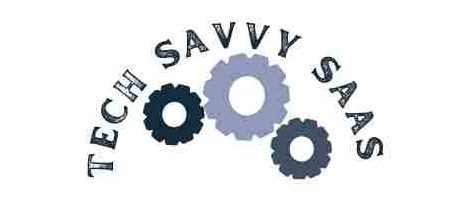The ultimate guide to SaaS mastery: Harnessing the Power of Software. In today’s digital landscape, software as a service (SaaS) stands as a pivotal force driving business transformation across industries. This comprehensive guide will delve into the profound impact of SaaS on modern enterprises, uncovering its benefits, strategic implementations, and real-world success stories. Whether you’re a startup aiming to streamline operations or a multinational corporation seeking scalability, understanding and harnessing SaaS can unlock unparalleled potential for your business.

What is SaaS?
SaaS, or Software as a Service, represents a paradigm shift in software delivery, offering applications via the cloud rather than traditional installation on individual devices. This model enables businesses to access powerful tools and functionalities directly through web browsers, eliminating the need for complex on-premise infrastructure. Examples such as Salesforce, Google Workspace, and Slack illustrate SaaS’s versatility across various business functions, from customer relationship management to collaborative team environments.
The Evolution of SaaS
Since its inception, SaaS has evolved in tandem with technological advancements, particularly the proliferation of cloud computing and subscription-based pricing models. According to research by Gartner, the global SaaS market is projected to reach $145 billion by 2026, underscoring its pivotal role in modern business strategies. This evolution has democratized access to cutting-edge software solutions, empowering businesses of all sizes to compete on a global scale with enhanced flexibility and operational efficiency.
Benefits of SaaS for Businesses
In today’s competitive business landscape, adopting SaaS offers a myriad of advantages that go beyond mere cost savings. Let’s delve into how software as a service transforms operations and enhances overall efficiency for businesses of all sizes.
Cost Efficiency
One of the most compelling reasons businesses embrace SaaS is its cost efficiency. Unlike traditional software that requires substantial upfront investments in hardware and licenses, SaaS operates on a subscription-based model. This means companies can start using sophisticated software solutions with minimal initial expenditure, reallocating funds towards growth initiatives rather than infrastructure. According to a study by Forrester Research, organizations can reduce their total cost of ownership (TCO) by 30% on average by opting for SaaS over traditional software deployments. For instance, a medium-sized marketing agency saved $50,000 annually by migrating to a cloud-based SaaS CRM system, which included savings on server maintenance and software updates.
Scalability and flexibility
The scalability and flexibility of SaaS platforms empower businesses to respond swiftly to evolving market dynamics and operational needs. Whether scaling up to accommodate growth or downsizing during economic downturns, SaaS solutions provide agility without the constraints of physical infrastructure. A notable example is Zoom, which experienced explosive growth during the COVID-19 pandemic. By leveraging SaaS infrastructure, Zoom seamlessly scaled its video conferencing capabilities to accommodate a 300% increase in daily meeting participants within months. This scalability not only ensured operational continuity but also enhanced the user experience through uninterrupted service delivery.
Furthermore, flexibility is a hallmark of SaaS, allowing businesses to customize software features and functionalities to suit specific operational requirements. For instance, HubSpot, a leading provider of inbound marketing and sales software, offers modular SaaS solutions that can be tailored with add-ons like CRM integration and marketing automation tools. This flexibility enables businesses to adopt a phased approach to digital transformation, enhancing efficiency across marketing, sales, and customer service functions.
Accessibility and collaboration
How do SaaS applications enhance accessibility and collaboration within businesses today? SaaS fundamentally changes the way teams work by enabling access to essential tools and data from anywhere with an internet connection. This accessibility is crucial for modern businesses operating in global markets where remote work and distributed teams are increasingly prevalent. According to a survey conducted by FlexJobs, 74% of respondents believe that remote work is the future, highlighting the importance of accessible SaaS solutions.
Real-time collaboration features embedded in SaaS platforms further elevate team productivity and efficiency. Tools like Google Workspace and Microsoft Teams facilitate seamless communication, document sharing, and simultaneous editing, reducing communication barriers and accelerating project timelines. For example, Slack, a popular team communication tool, saw a 30% increase in daily active users during the pandemic, underscoring the demand for robust collaboration tools in remote work settings.
Moreover, the ability of SaaS-based software to support remote work is not just convenient but critical for maintaining business continuity and fostering a collaborative work environment. Companies like GitHub, a platform for software development collaboration, report significant improvements in project delivery times and developer satisfaction due to their cloud-based SaaS infrastructure. This adaptability ensures that teams can collaborate effectively regardless of geographical constraints, driving innovation and operational efficiency.
Automatic Updates and Maintenance
How do automatic updates and maintenance provided by SaaS providers benefit businesses? SaaS alleviates the burden of manual software updates and security patches typically associated with traditional on-premise solutions. Providers like Adobe and Salesforce continuously update their SaaS offerings to incorporate new features and address emerging security threats, ensuring businesses always operate on the latest software versions.
This proactive approach to maintenance minimizes downtime and IT workload, allowing businesses to focus on core activities rather than routine software management. Research by IDC indicates that organizations spend 45% less time managing security issues with SaaS compared to on-premise software, translating into substantial productivity gains. For instance, Microsoft Azure, a leading cloud platform, achieves 99.95% uptime for its SaaS services, guaranteeing reliable access to critical business applications without interruptions.
Furthermore, staying current with new features and enhancements enhances the overall user experience and business efficiency. SaaS providers integrate user feedback and industry trends into their development cycles, ensuring that updates align with customer needs and market demands. Companies like Zendesk, a customer service SaaS platform, continuously roll out improvements such as AI-powered chatbots and enhanced analytics capabilities to drive customer satisfaction and operational excellence.
Strategies for Successful SaaS Implementation
How can businesses ensure the successful implementation of SaaS solutions to maximize efficiency and ROI? Here are some strategic approaches to consider:
Choosing the Right SaaS Provider
Selecting the appropriate SaaS provider lays the foundation for a successful implementation. Businesses should evaluate vendors based on reputation, reliability, and customer support capabilities. According to a survey by Gartner, 65% of businesses prioritize vendor reputation when selecting SaaS solutions, highlighting its importance in decision-making. For example, Amazon Web Services (AWS) is renowned for its robust infrastructure and customer-centric support, making it a preferred choice for enterprises seeking scalable SaaS solutions.
Service level agreements (SLAs) play a crucial role in ensuring SaaS performance meets business requirements. SLAs define parameters such as uptime guarantees and response times for support issues, establishing accountability between the provider and the business. Research by IDC shows that 83% of businesses consider SLAs essential for evaluating SaaS providers, emphasizing their role in maintaining service reliability and security. Salesforce, a leading SaaS CRM provider, offers SLAs that guarantee 99.9% uptime, reassuring businesses of continuous access to critical customer data and functionalities.
Integration with Existing Systems
Seamless integration with current software infrastructure is critical to avoid disruptions and maximize operational efficiency. Businesses should develop data migration strategies that ensure a smooth transition of data from legacy systems to SaaS platforms. A study by Deloitte found that 78% of businesses struggle with data integration during SaaS adoption, underscoring the importance of meticulous planning. Tools and APIs provided by SaaS vendors facilitate integration by enabling data synchronization and interoperability across systems. For instance, Workday, a cloud-based HR SaaS solution, offers robust APIs that streamline integration with enterprise resource planning (ERP) systems like SAP and Oracle.
Training and support
Effective employee training is crucial for maximizing the benefits of SaaS adoption and ensuring user proficiency. Providing comprehensive resources for ongoing support and education empowers employees to leverage SaaS tools effectively. Research by LinkedIn indicates that companies with a strong culture of continuous learning achieve 21% higher productivity levels among employees. For example, Microsoft offers a variety of training programs and certifications for its SaaS products, like Microsoft 365, enabling businesses to enhance workforce skills and drive adoption.
Real-life Examples of SaaS Success
How have companies successfully leveraged SaaS solutions to drive business growth and operational efficiency? Let’s explore real-life case studies that highlight the transformative impact of software as a service.
Case Study:
Company A, a mid-sized logistics firm, embarked on a journey to streamline its operations with a comprehensive SaaS solution. Facing challenges from legacy systems and disparate data sources, they implemented a cloud-based SaaS platform for supply chain management. The solution facilitated real-time visibility into inventory levels, streamlined order processing, and optimized logistics routes. According to internal metrics, Company A achieved a 25% reduction in order fulfillment times and a 30% decrease in operational costs within the first year of SaaS adoption. This efficiency boost translated into a notable 15% increase in return on investment (ROI) and enhanced customer satisfaction due to faster order deliveries.
Case Study:
Company B, a global manufacturing conglomerate, recognized the need to modernize its production and customer relationship processes. Leveraging SaaS platforms for production scheduling and CRM, Company B integrated these solutions to improve workflow efficiencies and customer interactions. By consolidating production data and customer insights on a unified cloud platform, they achieved a 20% reduction in production downtime and a 50% increase in on-time deliveries. This operational overhaul not only accelerated time-to-market for new products but also bolstered customer loyalty through personalized service offerings. Company B’s strategic embrace of SaaS not only fueled substantial business growth but also enhanced overall operational agility in response to market demands.
Key Takeaways
Throughout this guide, we’ve explored how Software as a Service (SaaS) represents more than just a technological shift—it’s a strategic enabler for businesses seeking agility, scalability, and efficiency. By adopting SaaS solutions, companies can reduce operational costs, enhance collaboration, and streamline workflows across departments. Real-life examples from companies like Salesforce, Zoom, and Microsoft illustrate how SaaS drives innovation and competitive advantage in today’s digital economy.
Understanding and leveraging SaaS is imperative for modern businesses aiming to stay ahead in a fast-paced market. Whether you’re a startup looking to scale efficiently or a multinational corporation striving for global reach, embracing cloud-based SaaS platforms can unlock new possibilities for growth and customer satisfaction. Research by McKinsey & Company indicates that companies embracing digital transformation, including SaaS adoption, experience 2.5 times higher revenue growth compared to their peers.
In conclusion, mastering SaaS involves strategic planning, selecting the right SaaS provider, and fostering a culture of continuous learning within the organization. By harnessing the power of SaaS, businesses can innovate faster, respond to market changes more effectively, and achieve sustainable success in the digital age.
Conclusion
Why are SaaS solutions pivotal in transforming business operations today?
SaaS solutions offer unparalleled opportunities for businesses to innovate, streamline operations, and drive growth. From enhancing accessibility and collaboration to automating updates and maintenance, SaaS empowers organizations to focus on core competencies while leveraging cutting-edge technologies. As businesses navigate a landscape increasingly defined by digital transformation, embracing SaaS isn’t just advantageous—it’s essential for staying competitive and future-proofing operations.
Start your journey to SaaS mastery today by evaluating reputable providers, integrating seamlessly with existing systems, and prioritizing ongoing education for your workforce. The potential benefits of SaaS extend beyond cost savings to include improved scalability, enhanced customer experiences, and accelerated time-to-market for new products and services.
More Post






